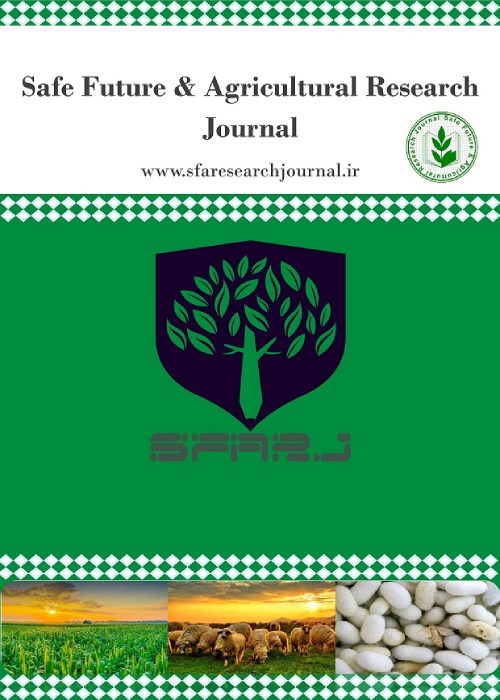فهرست مطالب
Safe Future and Agricultural Research Journal
Volume:1 Issue: 1, Winter 2022
- تاریخ انتشار: 1401/06/10
- تعداد عناوین: 2
-
Pages 1-10BackgroundThe use of medicinal plants and their effective compounds as natural sources that have antioxidant and antibacterial properties, has been considered by researchers. In this study, chemical compounds of Adiantum capillus-veneris essential oil were used to evaluate its antioxidant and antimicrobial activity using water distillation and gas chromatography.MethodsThe whole plant was dried at room temperature at 25 ° C and the distillation method with water with modifications was used using a Clevenger device for essential oil extraction. Gas chromatography-mass spectrometry (GC/MS) was used to identify the resulting essential oil compounds and the antioxidant and antibacterial activity of the essential oil was evaluated.ResultsThe most important chemical constituents of Adiantum capillus-veneris essential oil were carvone (33.00%), carvacrol (15.05%), hexadecanoic acid (7.02%), hexahydrofarnesyl acetone (4.25%) and n-nonanal (4.2%). The antibacterial activity of Adiantum capillus-veneris essential oils (mg/ml) was calculated and the highest antibacterial activity was determined by Staphylococcus aureus (8.23±0.68), Streptococcus pyogenes (12.46±0.31), and Diphtheroid (11.37±1.02) at a concentration of 100 mg/ml of essential oils.ConclusionThe results of the present study showed that the essential oil of Adiantum capillus-veneris prevented the growth of three pathogenic bacteria. This antibacterial property is due to the presence of flavonoid compounds in Adiantum capillus-veneris which has the capacity for therapeutic and medical uses.Keywords: Adiantum capillus-veneris L, Chemical compounds, Antioxidant, Antimicrobial, Essential oil, DPPH
-
Pages 11-19
The industrial maintenance of livestock and poultry on a large scale in an intensive manner has increased the possibility of diseases, which reduces the occurrence of these diseases helps to increase growth and improves production traits. Today, the use of growth-promoting antibiotics has been limited due to the possibility of bacterial resistance and also transmission through manufactured products to consumers. Medicinal plants with antimicrobial effects and reduced serum lipids have been proposed as suitable alternatives for antibiotics. The origin of many medicines are herbal plants because due to the lipophilic nature of the effective oils found in some medicinal plants, these compounds can completely disrupt the membrane structure of bacteria, especially Gram-negative bacteria, and even some effective oils in essential oils have Irritation of the digestive system, increasing the production of digestive enzymes, improving the use of digestive products and the body's immune response. The most important biological activity of medicinal plants is related to antioxidant and antibacterial activities, related to their biologically active molecules such as carvacrol, thymol, cineol, allicin, capsaicin, piperine, etc. The property of stopping the reproduction of the disease agent or the lethality of the disease agent is a common point between chemical drugs and medicinal plants, but creating a protective layer on the intestine to prevent the penetration and growth of the coccidiosis agent in the intestines and stimulating the body's immune system against the disease agent is a unique feature.
Keywords: Essential oil, Medical plants, livestock, Phytochemical, Prophylactic potential


